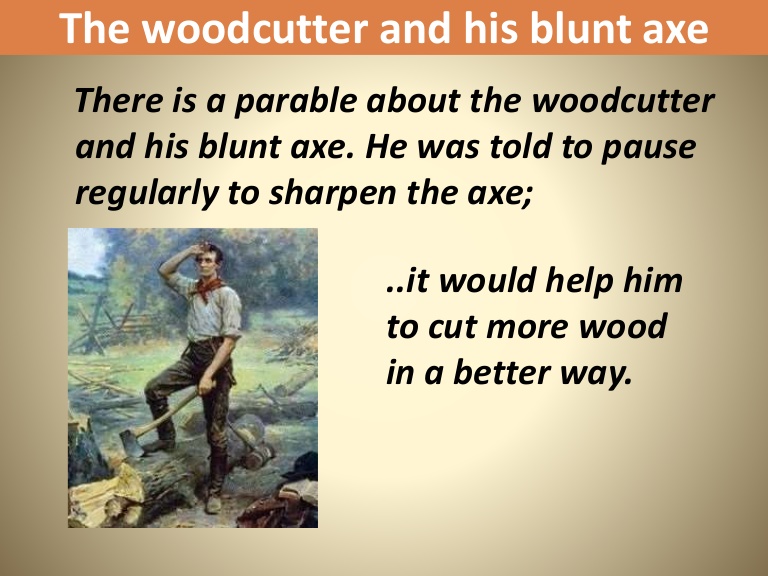1 The Blunt Axe: A Metaphor for Justice Gone Awry
In the justice system, the metaphor of the blunt axe vividly illustrates how deficiencies in processes, judgment, or execution can lead to outcomes that are neither fair nor precise. A blunt axe, unlike a sharp one, cannot deliver clean or measured blows; instead, it causes unnecessary damage, leaving chaos in its wake.
When wielded in the context of justice, the blunt axe represents a system or individual acting with harshness, insensitivity, or a lack of due care. Decisions made without proper arguments or understanding become tools of destruction rather than resolution. This metaphor underscores the devastating impact of carelessness, neglect, or even deliberate cruelty within a framework that is meant to uphold fairness and humanity.
In this sense, wielding a blunt axe is not just a failure of precision – it is an act of recklessness that sacrifices the dignity and well-being of those caught in its path. It is a powerful reminder of the importance of sharpening our tools: ensuring that laws, processes, and judgments are grounded in empathy, reason, and truth.
De Botte Bijl: Een Metafoor voor Gerechtigheid die Faalt
In het rechtssysteem illustreert de metafoor van de botte bijl hoe tekortkomingen in processen, oordeelsvorming of uitvoering kunnen leiden tot uitkomsten die noch eerlijk noch zorgvuldig zijn. Een botte bijl, in tegenstelling tot een scherpe, kan geen nette of precieze slagen toebrengen; in plaats daarvan veroorzaakt het onnodige schade en laat het chaos achter.
Wanneer deze metafoor wordt toegepast op gerechtigheid, staat de botte bijl symbool voor een systeem of individu dat handelt met hardheid, ongevoeligheid of een gebrek aan zorgvuldigheid. Beslissingen die worden genomen zonder degelijke argumenten of begrip, worden destructieve instrumenten in plaats van oplossingen. Deze metafoor benadrukt de verwoestende impact van nalatigheid, onzorgvuldigheid of zelfs opzettelijke wreedheid binnen een kader dat bedoeld is om rechtvaardigheid en menselijkheid te waarborgen.
Het hanteren van een botte bijl is in dit opzicht niet alleen een gebrek aan precisie; het is een daad van roekeloosheid die de waardigheid en het welzijn van degenen die erdoor getroffen worden, opoffert. Het is een krachtige herinnering aan het belang van het slijpen van onze instrumenten: ervoor zorgen dat wetten, processen en oordelen zijn gebaseerd op empathie, rede en waarheid.
2 A Blunt Axe: Striking Without Precision, Leaving Only Damage”
Deficiencies arise from errors, wear and tear, accidents, or environmental changes. As a result, things and processes only function inadequately. A practical example is an ax that becomes blunt over time or was not sharpened from the beginning.
To say that you are going to take the axe or wield the axe means that you are going to attack unabashedly.
Whoever wields the blunt axe is ruthless. Often with words or with a pen.
Such a person does not take another person’s life lightly, but does not do this neatly with arguments, but by coming down hard on them.
The one who chops with a blunt axe is rough, rude and ruthless.
“De Botte Bijl: Slaan Zonder Precisie, Alleen Schade Achterlatend”
Gebreken ontstaan door fouten, slijtage, ongelukken of veranderingen in de omgeving.
Daardoor functioneren dingen en processen alleen maar gebrekkig.
Een praktisch voorbeeld is een bijl die na verloop van tijd bot wordt of die niet vanaf het begin is geslepen.
Het gezegde met de botte bijl hakken of de botte bijl hanteren, houdt in
dat je ongegeneerd de aanval zoekt.
Wie met de botte bijl hakt, gaat meedogenloos te keer.
Vaak met woorden of met de pen.
Zo’n persoon laat geen spaan heel van een ander, maar doet dat niet netjes met argumenten, maar door keihard van leer te trekken.
Degene die hakt met een botte bijl is ruw, grof, meedogenloos
1 Mr. Gerard Spong – Theatercollege ‘In Vertrouwen’ – Bewijs
26 feb. 2019
The expression “The blunt ax” is a metaphor that can be used to convey several key points or meanings, depending on the context in which it is used. Some possible key points or interpretations of the expression “The blunt ax” include:
Ineffectiveness or inefficiency: The blunt ax can represent a tool or approach that is not sharp or effective, resulting in difficulty or failure in accomplishing a task or achieving a goal. It can symbolize a lack of precision or proficiency in addressing a particular issue or problem.
Futility or pointlessness: The blunt ax can signify a futile or pointless effort, where one’s actions are unlikely to yield meaningful results or outcomes. It can represent wasted effort or energy expended without achieving the desired outcome.
Inadequacy or incompetence: The blunt ax can symbolize a lack of skill, ability, or competency in a particular area or task. It can represent a deficiency in knowledge, expertise, or preparation that hinders one’s ability to effectively handle a situation or accomplish a task.
Need for improvement or refinement: The blunt ax can highlight the need for improvement or refinement in a particular area. It can suggest the importance of sharpening one’s skills, knowledge, or approach in order to achieve better results or outcomes.
Symbolic representation of a dull or uninteresting situation: The blunt ax can be used to represent a situation or experience that lacks excitement, interest, or inspiration. It can signify a lack of vitality or enthusiasm in a particular context.
Overall, the key points of the expression “The blunt ax” can vary depending on the context, but it generally conveys ideas related to ineffectiveness, futility, inadequacy, or the need for improvement.
2 “The Burden of Proof” – What is it?
11 dec. 2013
3 Scary WITCHCRAFT Prank
2 nov. 2017
